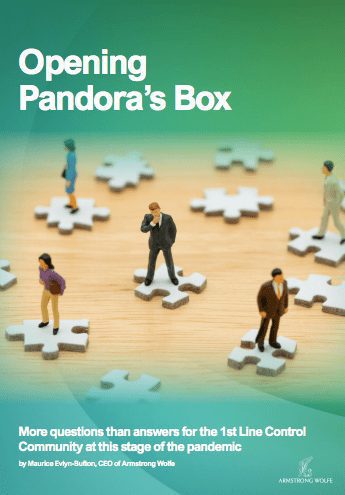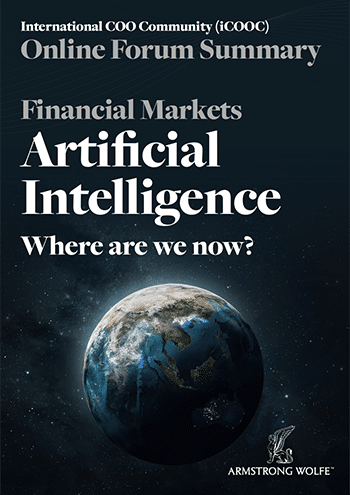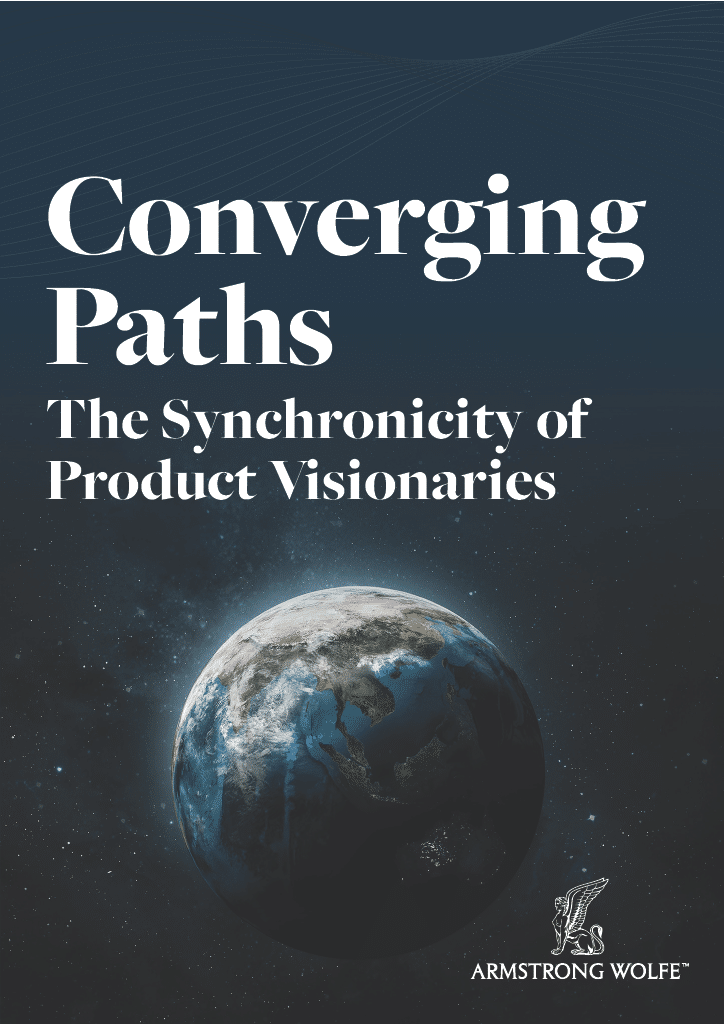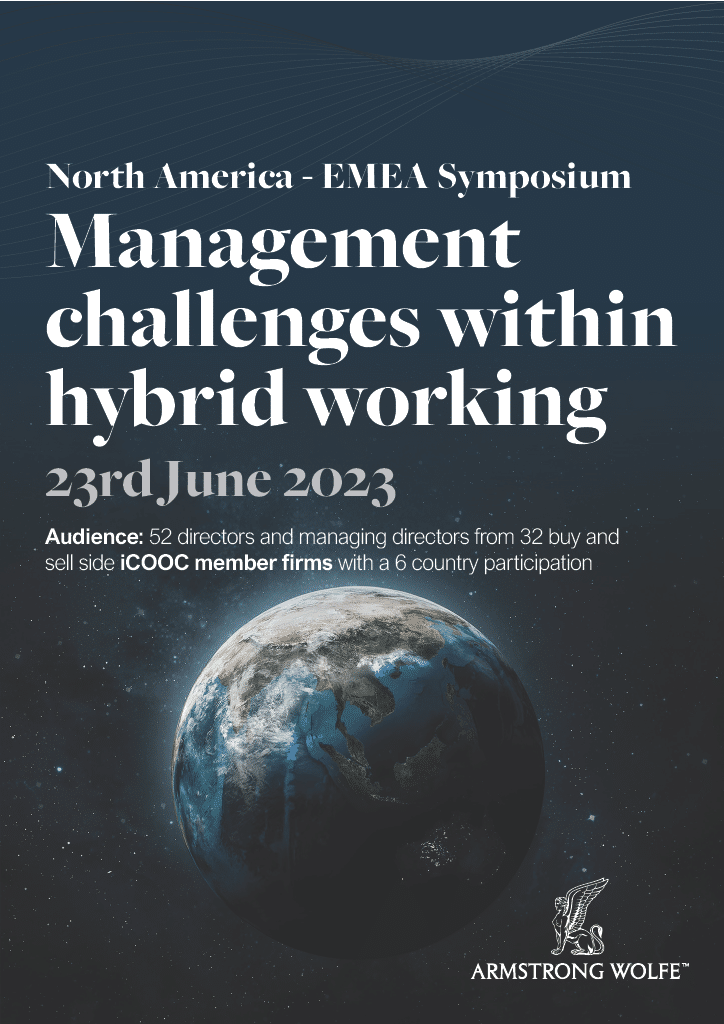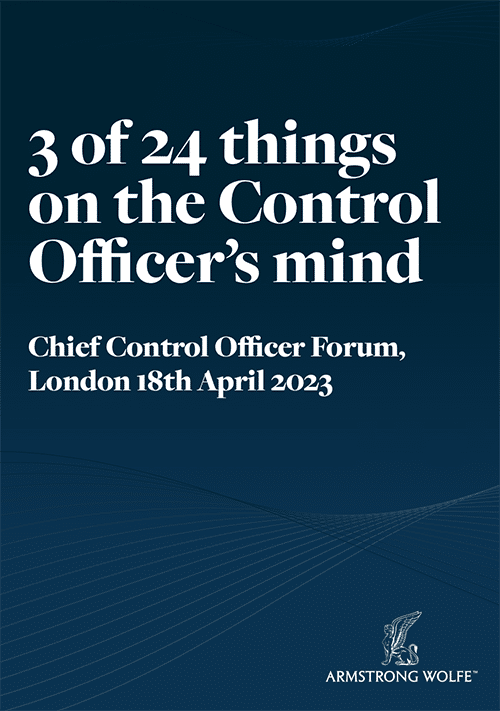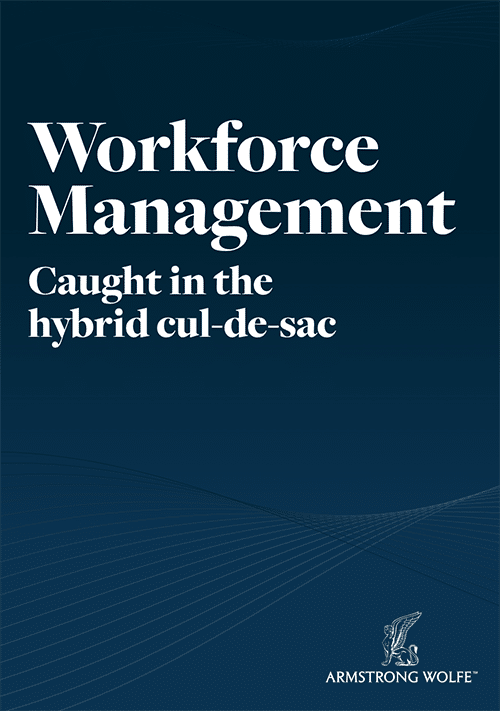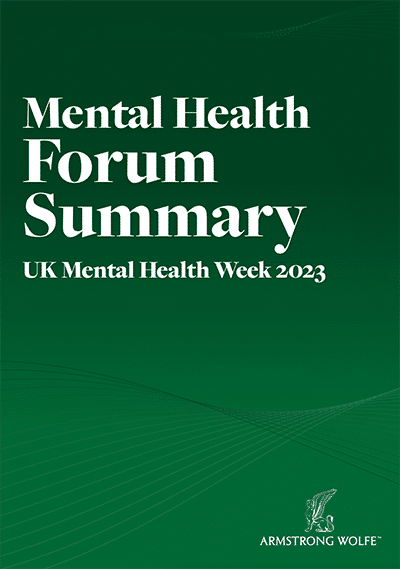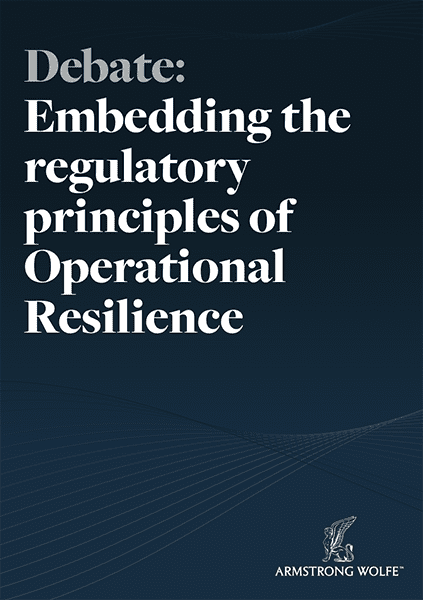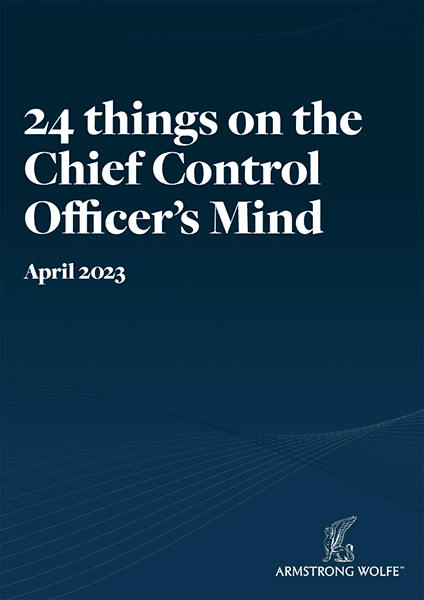More questions than answers for the 1st Line Control Community at this stage of the pandemic
The question remains:
How best meet the challenges presented today and set the foundations for the anticipated change in working patterns and optionality for the workforce in the future.
This must be put in context to the industry’s successes in meeting the COVID challenge to date:
“How the industry has pivoted and made so many decisions and changes in such a short period of time is something to be recognised. The collective effort to meet these challenges will hopefully be recognised by a heightened level of trust from the regulators.” (Global Chief Control Officer, London)
Below is a summary of points raised in Armstrong Wolfe’s February Global Chief Control Officer’s webinar:
Questions Seeking Answers
There has been a marked increase in profanity, attributed to stress, frustration and not been in earshot.
Q. What does this tell you about the individual: is this an indication of an erosion of behavioural standards or an innocent by-product of isolation?
Limited conduct training undertaken since March 2020 that has specifically been shaped to meeting the uniqueness of the WFH supervisory challenge.
Q. With the average period from conduct event to discloser being 14 months, we would anticipate such issues to materialise June 2021 onwards. What lessons can be learnt in training staff for a WFH model that can be adapted to add benefit today and post- pandemic?
Productivity remains high, to the point of concern, a by-product is most assuredly fatigue.
Q. Are the possible consequences poor decision-making and/or a breach of personal integrity thresholds?
Q. How can you address falling standards of awareness and focus on controls?
Tooling staff to be effective in WFH has significant discrepancies across the market, from issuance of chairs and desks in large numbers by some companies to no such issuance as a policy by others, although generally an upgrading of computer hardware is now accepted as a necessity in WFH locations in an extended period of lockdown.
A renewed focus to confirm staff working locations amidst WFH. “I will admit we do not know where all our staff are working” one CCO commented, confirmed as a common issue.
Q. What is the evolving industry-wide policy on how to address the complexities of having a distributed workforce across different states, provinces, countries e.g., pay/tax legislative requirements and regulatory certification obligations?
What next? The over-riding considerations and focus is the future state of the workforce and its configuration.
Q. What will be the control, conduct and supervisory framework required to meet the demands of an industry workforce moving into a new paradigm?
Q. What level of forbearance and/or recognition will be offered by the regulators in recognising changes in workforce practices?
Policy Developments amidst the Pandemic
WFH policy documents are commonplace, specifying interim workforce rules (including, for example, authorised communication tools). Such documents have been better received when drafted and validated between LoD1 and LoD2 working hand in hand.
Communications platforms have varied in capability and acceptability throughout the pandemic, although the default platform now appears to be Microsoft Teams. The client demand, however, for accessibility has led to exceptions being made in relation to Zoom. There remains no industry-wide approach or adoption to one platform, which many felt would benefit the industry as a whole and aid communication and business connectivity.
To print or not to print? Many have Banking and Markets (GBM) integrated at divisional level. In such cases there has been adjusted policymaking to accommodate the demands of bankers to be able to read lengthy documents, whereas Markets staff have either had access withheld (to printing documents) or onerous policies adopted to allow use that have largely eliminated access e.g., staff must self-attest weekly that they are following policy guidelines, particularly relating to storage of material. Some banks have issued second/ additional screens to accommodate document reading and in parallel withheld access to print.
Before authorization for an employee to WFH, three steps appear to be common practice and policy:
1.test of WFH configuration
2.acknowledgement of WFH rules
3.validation from manager +1
Weekly activity reports presented to business-line management to raise concerns or issues faced in WFH (in addition to daily escalation to support teams as needed).
Event management: more effort has been applied to understanding when losses are more likely to occur, leading to a renewed focus on prevention through machine learning and evolving protocols to meet such events. Consequently, training for traders and awareness training for control team members has been undertaken by some banks.
Societal influences and awareness: examples being how events in society, such as general elections, Brexit deadlines, even key events such as the Super Bowl and the FA Cup may need to be noted as days/periods when extra vigilance is required whilst in WFH.
Expense policies have been adjusted for internal and external staff and/or client entertainment, within the regulatory parameters.
Monitoring of staff attendance and/or usage of office desk space remains a challenge to manage effectively, being undertaken manually and supported by spreadsheets. This manual approach and policymaking will need to be automated to remove possible control issues when flexible working patterns are established as normal working practices.
Previously hard signatures for some transactions, such as trade confirmation, have been automated.
Cultural Challenges within a Dislocated Workforce:
Inclusion networks have thrived in the pandemic, as new demographics have materialised through accessibility, with more people attending events to raise the profile of a company’s efforts. This progress needs to be solidified before a return to the office materialised to ensure it is not a momentary peak in awareness.
New joiners: embedding them within your culture.
How to replicate the benefits of direct human connectivity, the spontaneous development of ideas, exchanges, and the interaction of coffee bar chats.
Loss of the impact of cultural surveillance (see Armstrong Wolfe POV: The industry must focus on Cultural Surveillance capability to meet the Conduct Challenge) namely the observational discovery of employees co-located with colleagues. Observational training, technologies and procedures will need to be developed to fill this capability gap.
Leadership training will play a key role in the future state of the workforce, its health and resiliency. Organisations will need a cultural shift to recognise and invest in this priority.
The workforce has secured trust in its ability to work unattended amidst the pandemic. A duty of care has arisen for employers to support mental health; awareness training will be required and defining employer responsibilities will be a complex exercise and different in each jurisdiction, where establishing global policies and consistency will be challenging.
Training to re-energise staff, to re-purpose staff is seen as a cornerstone of reinforcing cultural allegiance, and in redefining individual and collective purpose (see AW articles The Q1 2021 COO Leadership Challenge: to repurpose and re-energise staff and Workforce Planning and Productivity).
Assumptions for Future Planning
Staff want certainty. Market conversations suggest those companies that have gone firm on a future date for the next policy review on WFH, where this date is autumn or later 2021, are reaping the benefit of enhanced morale due to this certainty.
“People need to plan their lives; they need to be making decisions that impact family and certainty enables such decisions to be made.” (Regional Control Officer, New York)
WFH will be a component part of all working models to differing degrees post-pandemic.

